By Peter Collins
Photos by Peter Collins unless otherwise noted. Click to ENLARGE
A little late but a wonderful journey up the Stelvio with a top notch reporter and photographer, Peter Collins.
June 18-21, 2015. I last joined up with this event as long ago as 2003. At that time it was showing signs of a healthy future with many features not normally found in fixtures of this type.
I have just been lucky enough to cover it again and can report only good things. Under the organization of the Circolo Veneto Automoto and headed by the excellent Stefano Chiminelli, Le Mitiche can now offer three days of superb driving, with an entry limited to approximately 100 cars, with good hotels, superb organization and almost hassle-free motoring. The Circolo’s greatest asset is that it consists of a passionate group of club members who just want to organize the best event of this sort that they possibly can. In addition they are non-profit making and this is reflected in the cost, so there are no horrendous entry fees.
This year’s format started with scrutineering and formalities in the small town of Romano d’Ezzolino just outside Bassano del Grappa in the Veneto. The regulations require that entries must consist only of open cars – barchettas, spiders, cabriolets, sports racers etc. – with a date cut-off of 1960.
The oldest car was Venanzioro Fonte’s Alfa Romeo RL Targa Florio of 1924, a fabulous piece which I had the pleasure of running behind up the Passo Manghen on the first day until its owner found it had too long gearing for mountain work and, the next day, substituted a more touring example of Arese’s handiwork. It also had an explosive exhaust which was sheer music, but which the owner also suggested “You wouldn’t want to take it to church on a Sunday….”
Eddie McGuire, of Gordini and Cooper Bristol fame, works tirelessly on behalf of the event, coordinating entries from across the world and running himself in his blower 4.5 liter Bentley amongst a 13 example cache of these cars. The overall entry, from 11 countries, started and ran in car date chronological order with earliest cars at the front and latest at the back. Example figures were five Ferraris including 340 MM and 166 MM. There were five Maseratis, including 250S, 300S and A6GCS.
Out of seven Jaguars including C and D Types, one was the unique French Barou bodied 120 of Wolfgang Techel. As well as the RL there were both 6 and 8C Alfa Romeos. OSCA, Lancia, Fiats and Amilcar; the list went on and I apologize for anybody not mentioned. I must express a huge thank you to Gianni Codiferro for making available his Porsche 550 Chamonix for our participation.
Two overnight stops were included in the itinerary and, as this year’s event was concentrated in the Trentino/Alto Adige areas, these were Bolzano and Trento, cities not far apart but in the two and a half days of driving, participants needed to cover around 530kms in total. Various tests are included of the short, regularity, type in order to establish a finishing order.
By their very nature, the cars being barchettas, their carrying capacity is low, so the organizers ensure luggage is moved from hotel to hotel and this worked very well indeed, with suitcases already in rooms upon arrival after a days’ driving.
The start was from the scrutineering location at 13 30 on the Friday and the first afternoon settled everyone into what was ahead. It consisted of 140kms over secondary and minor roads – but never rough – over two passes, the Manghen and the Lavaze, each of about 2000 meters. Just to keep all on their toes a biblical downpour within 20 minutes of the start had everyone stopping and donning their wet weather gear, but it was hot and clear on arrival in Bolzano, where first the cars were displayed to the public in one of the main piazzas, before continuing to the designated hotel night-stop.
Saturday was the day of reckoning for all, as the not overlong 280kms run included the daunting Stelvio followed by the fearsome Gavia passes. To get everyone warmed up though, crossings of the Passo Mendola and Passo delle Palade were slotted in as primi piatti before the secondi. The main road run from Merano was dealt with easily with the inestimable help of our two outrider Polizie bikers, who carved a safe passage through the tourists. Why do the latter still drive at 25mph-40mph the same as they did 50 years ago, despite huge advances in motorcar dynamics?
At sea level the temperature had hovered around 26 degrees C all of the morning and was that figure as we hit the 39th tornante at the bottom of the Stelvio. As we wound our way up the ceaseless point and squirt of the seemingly vertical mountain face the weather worsened, as the temperature dropped and cloud turned to rain, sleet, hail and, finally, snow at the summit where it was -4 degrees C.
When it hailed, our total lack of any windscreen protection had us down to a crawl as it was impossible to see where we were going, but luckily, we only had to endure about ten minutes of it, which was quite enough. So much hype surrounds the climb from the east, which is effectively point and squirt with the proviso that you must take the hairpins cleanly and avoid the numerous bikers, that the other side is ignored. It shouldn’t be. It is every bit as impressive in its own way and, more than that, the sun came out again.
Over lunch in Bormio, I began to wonder what I was doing there, with the thought of having to tackle the Gavia ahead. Perhaps I shouldn’t read so much but, I suffer from vertigo and having watched the excellent 1958 Coupe des Alpes film and read many stories of late ‘50s/early ‘60s rallies over the unmetalled road, I asked the organizers about it before we restarted. ‘The going up is no problem, it’s the coming down that needs to be treated with respect” and so it was. With sheer drops and a road of only single-carriageway width, guarded only by marker stones, it was a fabulous experience and one to be recommended – slowly.
The summit is, well, just bleak and it was almost surreal to find Matteo Crippa’s Ferrari 340 MM parked up there amongst the scree. One of the huge enjoyments was that as all cars must be barchettas, everyone is able to appreciate the noise and sheer dynamic personalities of all the other cars as you folly the differing exhaust notes over mountains and along fast, empty roads in the valleys. I could have sat behind the Alfa RL and Ferrari 340 MM all day, but a huge pleasure was following an enthusiastically driven Amilcar for kilometer after kilometer along a fast but sinuous road, its occupants looking for all the world as though they were piloting a motorcycle and sidecar combination as they leaned into alternate bends.
It was a comparatively easy afternoon run down to Trento over the Passo Tonale after all that excitement and, like so many of the towns and villages we passed through, we enjoyed a typically Italian enthusiastic and welcoming arrival, followed by another dinner of high standard in the evening.
Sunday morning’s return run down to Bassano was over the Passo Vezzena and via a test in the First World War battle town of Asiago, marking the centenary of the tragic event this year. A short run of only 110kms allows the organizers to bring the field into the center of Bassano del Grappa for a midday refreshment halt and to allow the public to inspect the cars before a final start is made to cover the short 15kms to the official finish in the medieval town of Marostica and its Castello.
All had a story to tell and Eddie McGuire himself suffered a burst high-pressure oil line on the Friday that was soldered on the spot and 20 liters of oil borrowed from a passing participant to enable him to complete the last test before it closed. Similarly, the D Type Jaguar of Christian Hore lost a core plug, but was able to borrow a spare off a passing C Type. The crew fitted it at the roadside, refilled with coolant and were off without too great a delay.
Throughout the event the roads were well-chosen, the vistas outstanding, the overnight stops well-executed. It had been a superb experience and unequivocally to be recommended. Thank you to Stefano Chiminelli and his team for three wonderful days. We’re planning for next year already.
Results:
1 Osvaldo Peli/Nicola Dona Fiat 508S Coppa d’Oro
2 Alberto Riboldi/Riccardo Riboldi Fiat 508S Siata
3 Philippe Jolly/Salvatore Guerreri Amilcar CGSS
Ladies Cup
Iria Fernandez/Marta Gispert Allard J2X
Trofeo Museo Dell’Automobile
Frans Van Haren Alfa Romeo 8C 2900A Botticella.
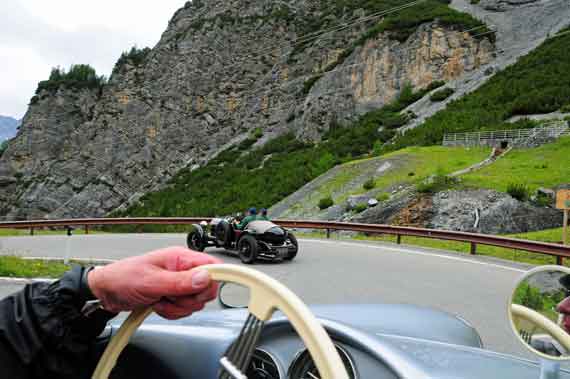
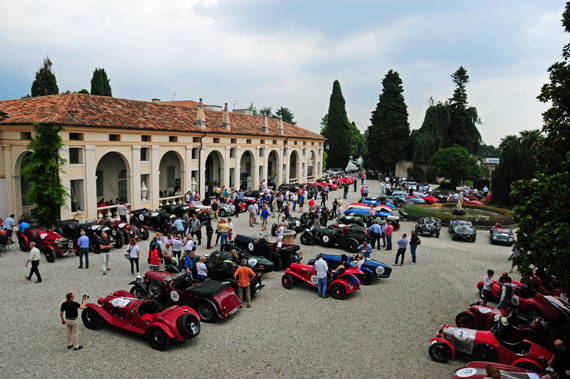
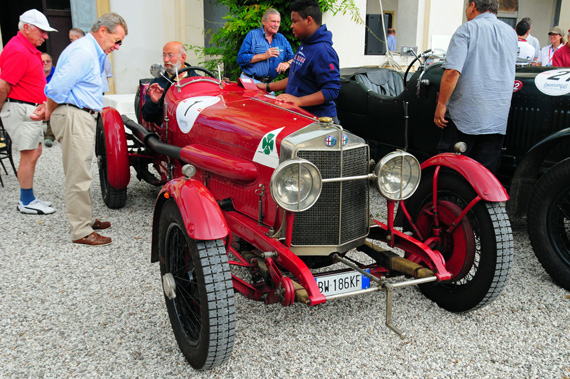
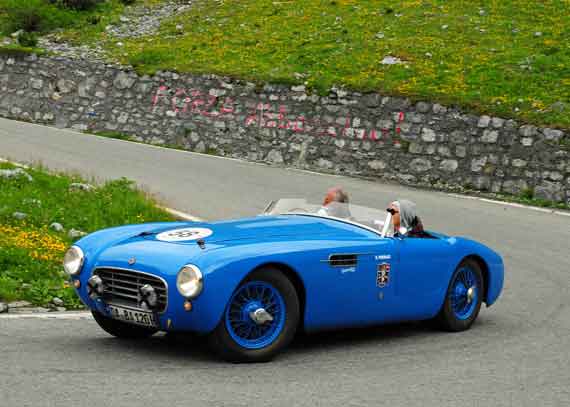
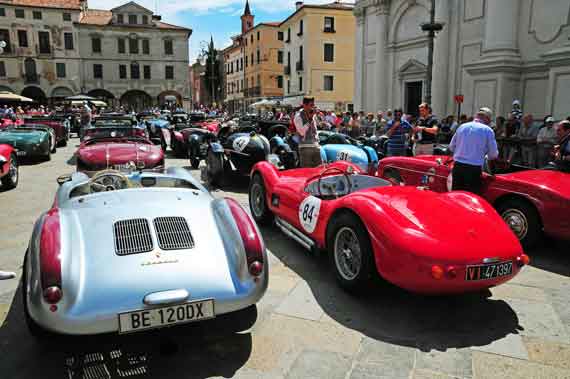
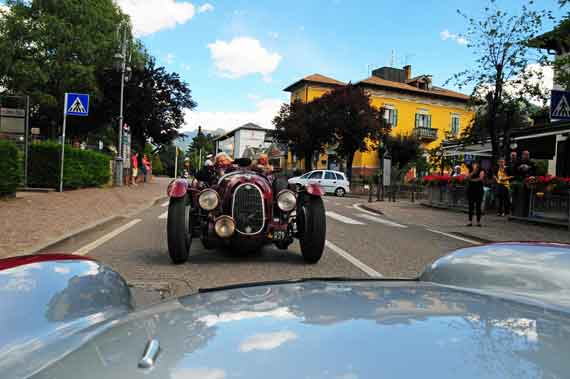
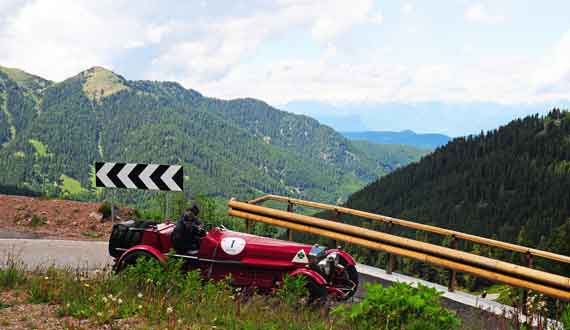
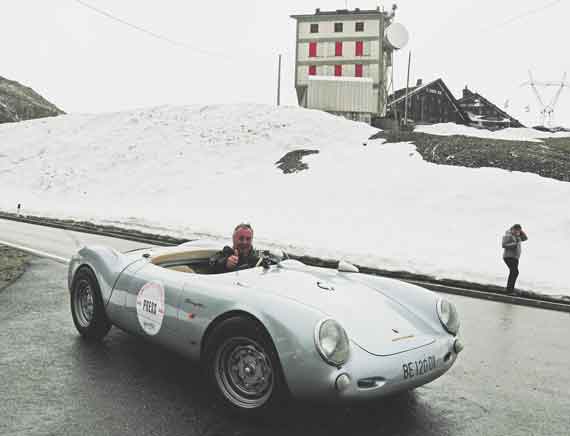
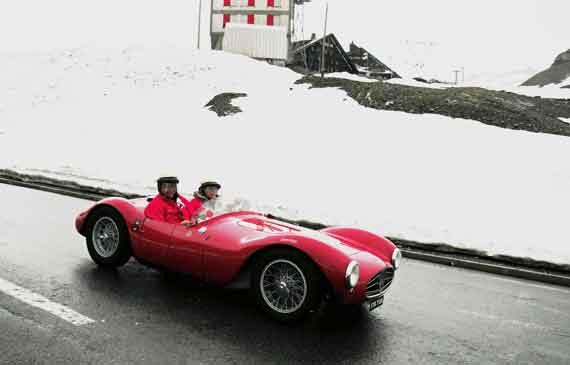
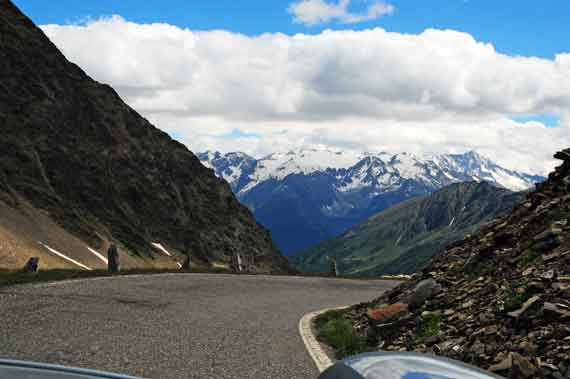
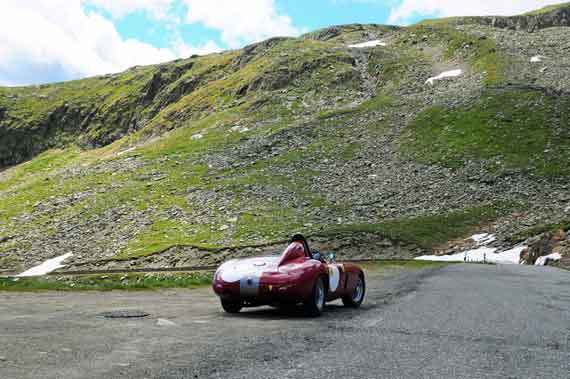
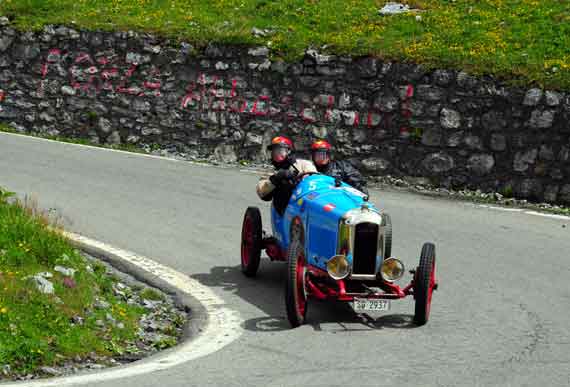
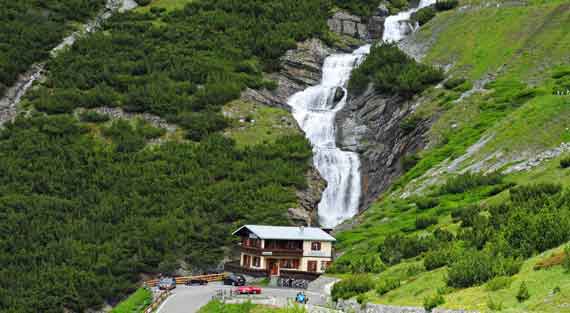
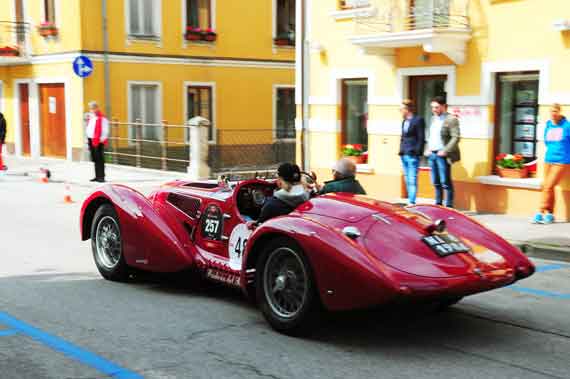
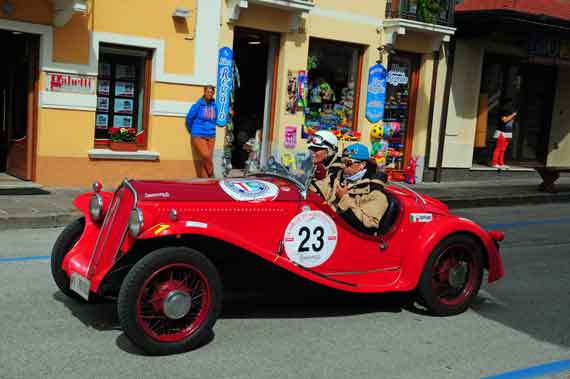
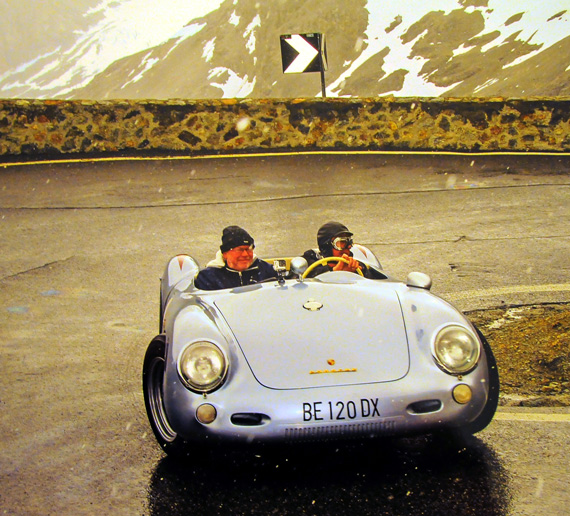
Thank you so much for the great photos and essay on what sounds like a great event. I specially loved it as my wife and I had driven the Stelvio in the fall of 2012, just because I wanted to, not because it was on the best route to our next stop! The great takeaway from this article may just be the mention of the various towns that the competitors visited for lunch and overnite stops, they all sound like MUST visits for my next visit to NE Italy!